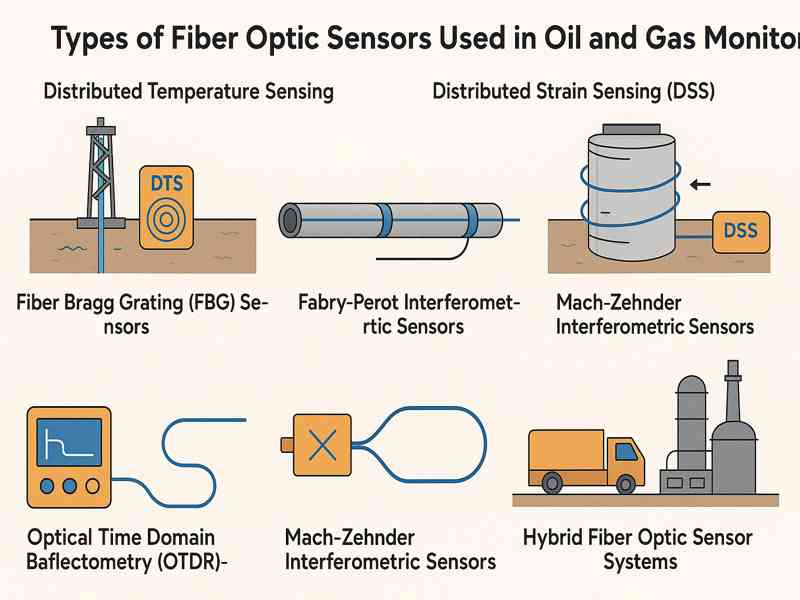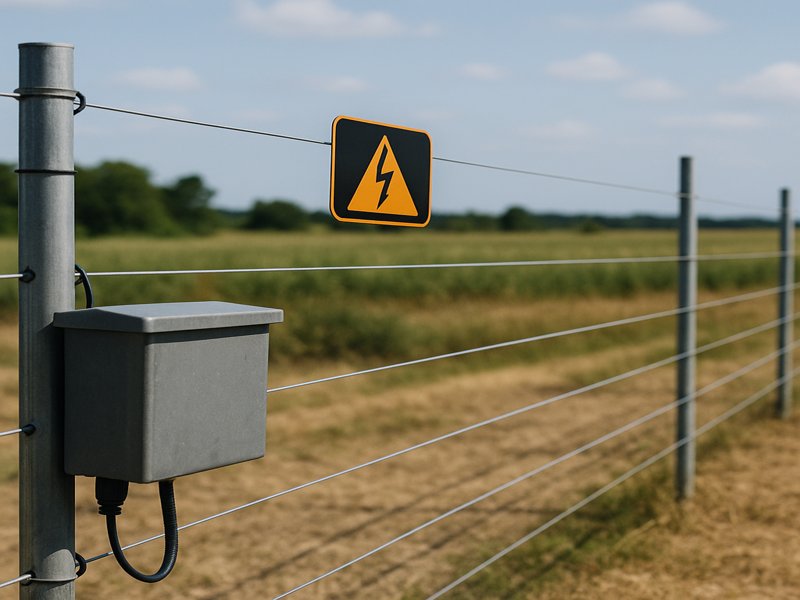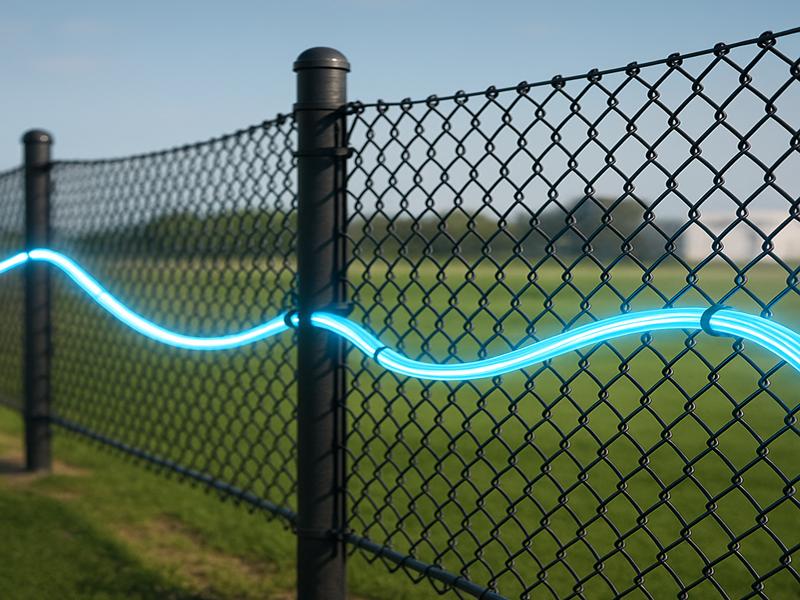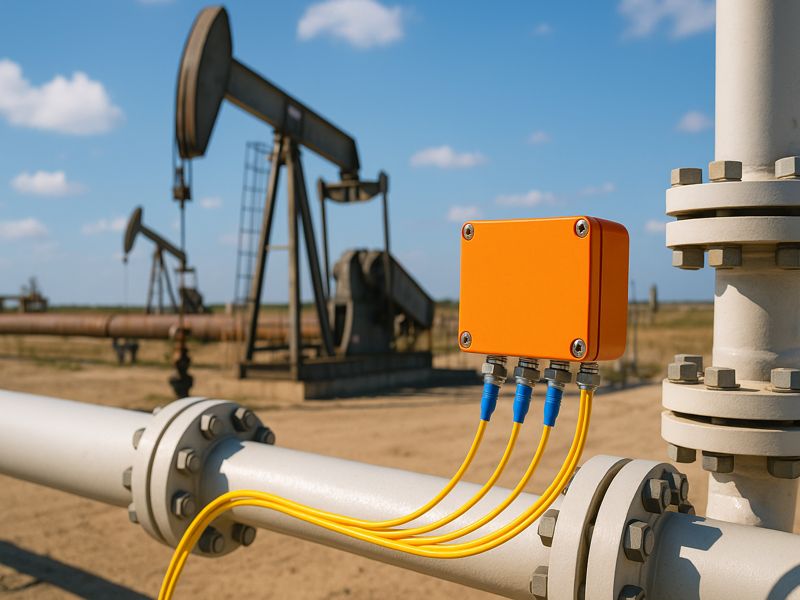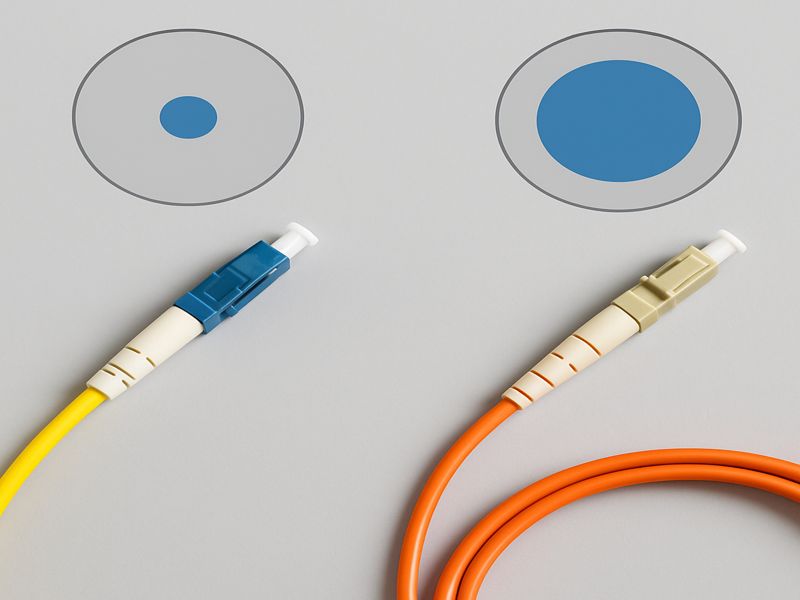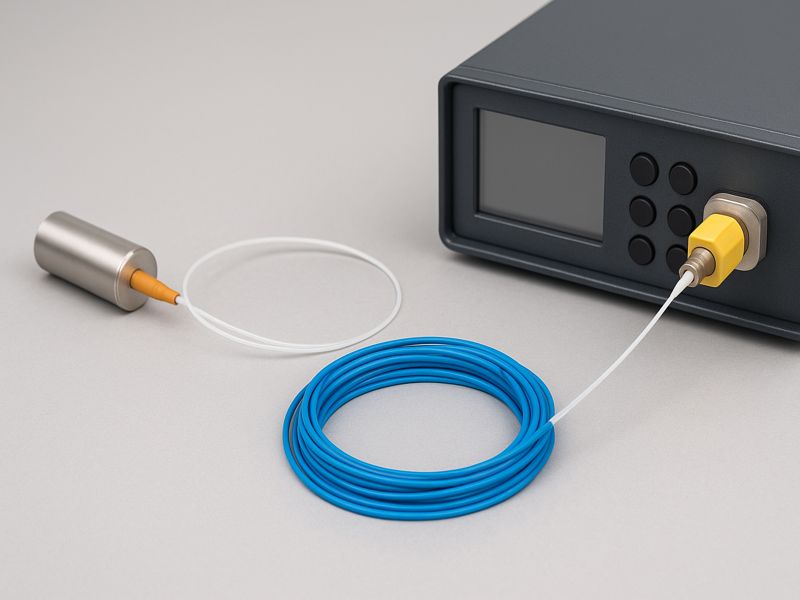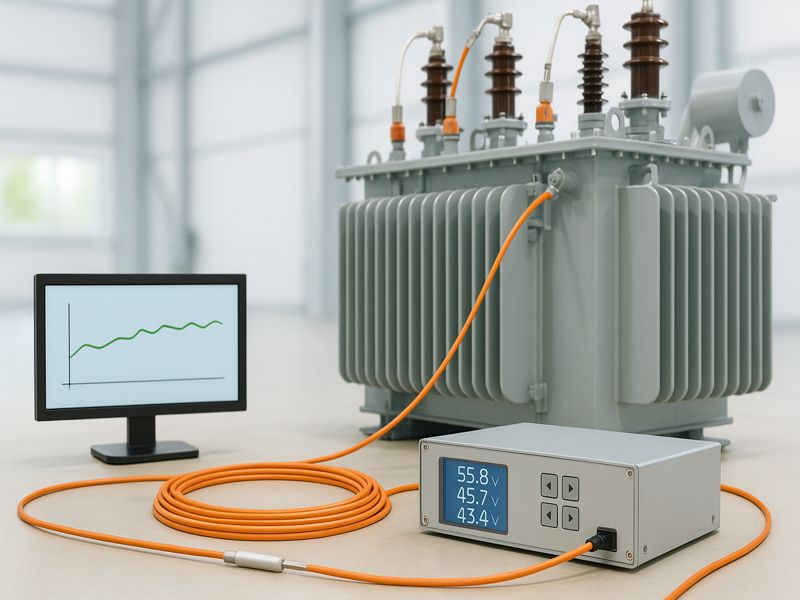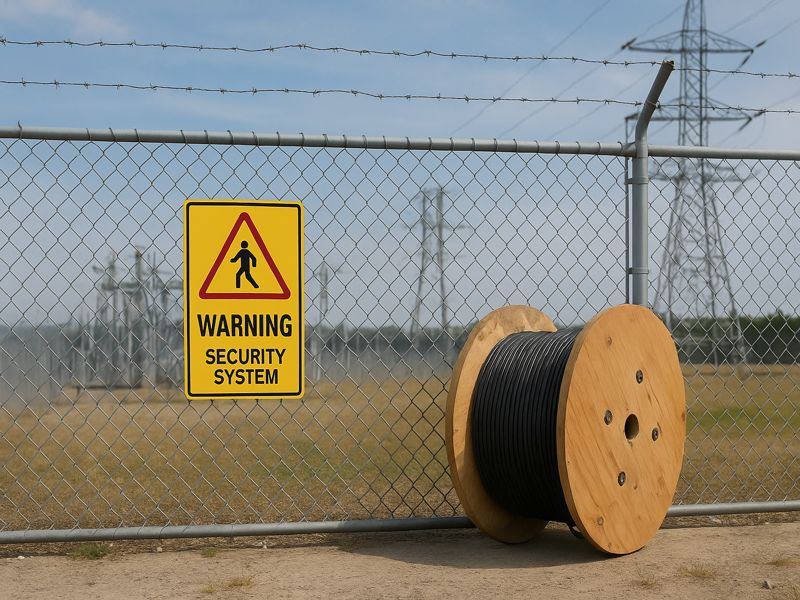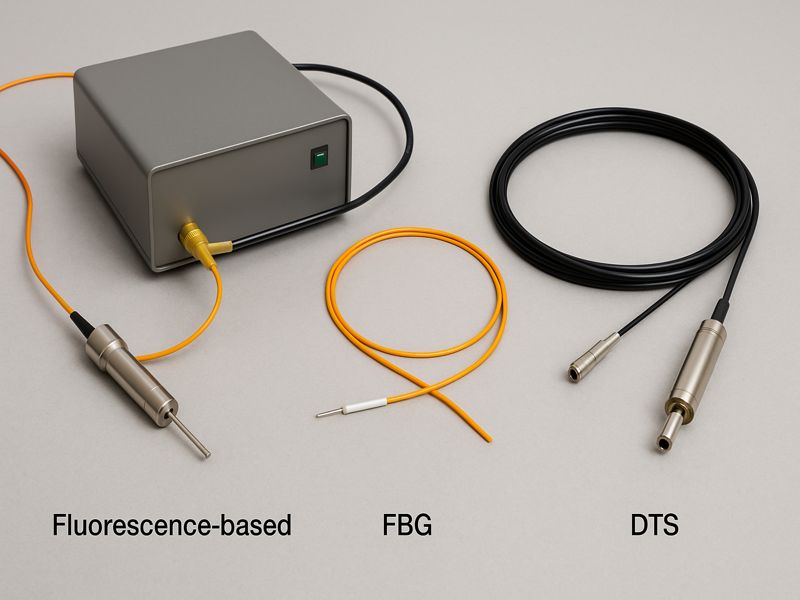High pressure, heat, corrosion, and remote locations are some of the harsh conditions that the oil and gas sector must deal with. Accurate monitoring is vital for safety, efficiency, and environmental protection. Fiber optic sensors, immune to electromagnetic interference and ideal for harsh environments, are transforming data collection across upstream to downstream operations. This article outlines the main types of fiber optic sensors, their principles, and applications in oil and gas monitoring.
Introduction to Fiber Optic Sensing in Oil and Gas
To identify variations in temperature, pressure, strain, acoustics, and other physical factors, fiber optic sensors use light signals that are sent by optical fibers.Their advantages include:
High sensitivity and accuracy
Long-distance data transmission
Resilience to harsh environments
Compact size and lightweight design
Non-electrical sensing (spark-free)
These properties make fiber optic sensors ideal for real-time monitoring in hazardous locations such as offshore platforms, deep wells, pipelines, and refineries.

Classification of Fiber Optic Sensors
Fiber optic sensors used in oil and gas are commonly categorized in two ways:
By Sensing Mechanism:
- Intrinsic sensors: Sensing occurs within the fiber.
- Extrinsic sensors: The fiber transmits light to an external sensor.
By Measurement Principle:
- Distributed sensors
- Quasi-distributed sensors
- Point sensors
Let’s examine the most widely used fiber optic sensor types in the oil and gas industry based on these classifications.
Distributed Temperature Sensing (DTS)
Optical fibers are used as linear sensors in Distributed Temperature Sensing (DTS) systems to monitor temperature across vast distances, frequently more than 30 km. These systems operate based on Raman backscattering, where temperature-induced changes affect the intensity of scattered light.
Applications:
- Downhole monitoring in wells for reservoir profiling
- Pipeline leak detection
- Fire detection in tunnels or offshore facilities
- Thermal profiling in steam-assisted gravity drainage (SAGD)
Advantages:
- Continuous temperature profile
- Real-time data
- No need for multiple discrete sensors
Distributed Acoustic Sensing (DAS)
Distributed Acoustic Sensing (DAS) transforms standard optical fiber into an array of virtual microphones. It detects vibrations and acoustic signals along the fiber via Rayleigh backscattering.
Applications:
- Pipeline intrusion detection
- Hydraulic fracturing monitoring
- Leak detection
- Well integrity monitoring
- Seismic monitoring
Advantages:
- Rapid response to acoustic events
- Long-range surveillance (up to 50 km)
- High spatial resolution
DAS is especially powerful for real-time situational awareness, such as identifying third-party interference or mechanical anomalies.
Distributed Strain Sensing (DSS)
Distributed Strain Sensing (DSS) also leverages Rayleigh or Brillouin backscatter to detect deformation along the fiber caused by strain. Often, DSS is integrated with DTS and DAS for multi-parameter monitoring.
Applications:
- Pipeline structural health monitoring
- Tank deformation
- Wellbore stability
- Geotechnical movement around drilling platforms
Advantages:
- Full-fiber length coverage
- Early warning of structural failure
- Real-time feedback for geomechanical modeling
Fiber Bragg Grating (FBG) Sensors
Bragg Fiber By recording recurring variations in the refractive index along a fiber core, grating sensors are point sensors. These gratings reflect specific wavelengths of light that shift based on temperature or strain changes.
Applications:
- Pressure and temperature monitoring in downhole tools
- Flow assurance in subsea systems
- Pipeline pressure sensing
- Valve position monitoring
Advantages:
- High precision
- Multiplexing capabilities (multiple sensors on one fiber)
- Compact and corrosion-resistant
FBG sensors are widely used in high-temperature and high-pressure environments, making them invaluable in wellbores and subsea pipelines.
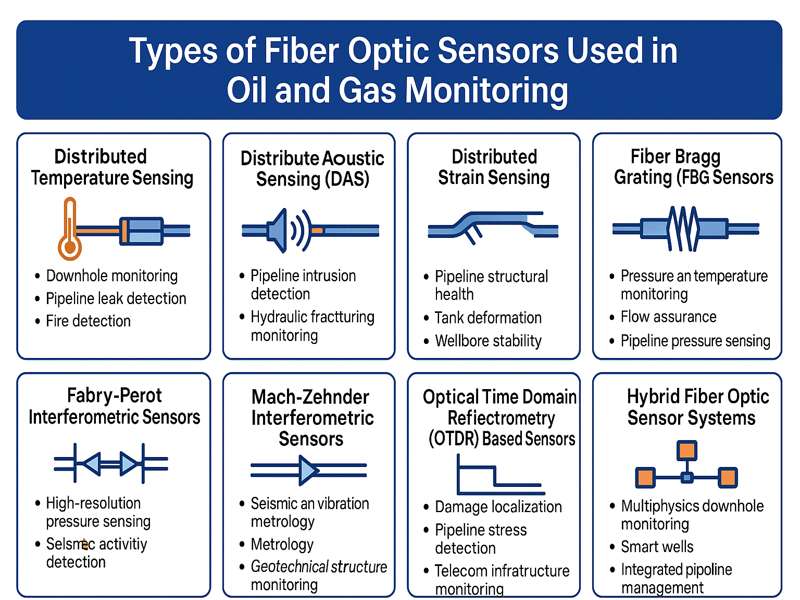
Fabry-Perot Interferometric Sensors
These sensors rely on interference between reflected light beams within a small cavity. The cavity length changes with pressure or temperature, affecting the interference pattern.
Applications:
- High-resolution pressure sensing
- Subsea structure monitoring
- Seismic activity detection
Advantages:
- Ultra-sensitive
- Capable of harsh environment deployment
- Intrinsic safety due to optical nature
Fabry-Perot sensors are often found in downhole logging tools or permanent reservoir monitoring systems.
Mach-Zehnder Interferometric Sensors
These sensors split a light beam into two paths: one reference and one exposed to the measurement environment. Recombining them reveals interference patterns that shift due to temperature, strain, or pressure changes.
Applications:
- Seismic and vibration monitoring
- High-precision metrology in refineries
- Geotechnical structure monitoring
Advantages:
- Exceptional sensitivity
- Can detect minute displacements or vibrations
While more complex and expensive, these sensors are valuable for mission-critical monitoring tasks.
Optical Time Domain Reflectometry (OTDR)-Based Sensors
OTDR techniques send a light pulse down the fiber and analyze backscattered signals to detect changes in the fiber caused by bending, pressure, or temperature. Though often used for diagnostics, OTDR can also function as a sensing tool.
Applications:
- Damage localization in optical fibers
- Pipeline stress detection
- Telecom infrastructure monitoring in offshore rigs
Advantages:
- Pinpoint fault location
- Long-range and low-loss sensing
- Minimal system complexity
Hybrid Fiber Optic Sensor Systems
Many modern applications in oil and gas require more than one type of data (e.g., temperature, vibration, strain). Hybrid systems integrate DTS, DAS, DSS, and FBG technologies into a single fiber or a layered network.
Applications:
- Multiphysics downhole monitoring
- Intelligent completions and smart wells
- Integrated pipeline management systems
Advantages:
- Rich, multi-dimensional data streams
- Reduced deployment complexity
- Enhanced decision-making through data fusion
Such systems are increasingly being adopted for their ability to provide a full picture of subsurface and topside operations in real time.
Benefits of Fiber Optic Sensors in Oil & Gas
The widespread adoption of fiber optic sensors in oil and gas is driven by their ability to meet critical operational demands:
| Benefit | Description |
| Environmental resilience | Operate in high-temp, high-pressure, corrosive environments |
| Safety | No electricity = spark-free, safe for explosive zones |
| Long-range sensing | Up to 50+ kilometers coverage on a single fiber |
| Real-time monitoring | Enables predictive maintenance and faster response |
| Multiplexing | Multiple sensors on one fiber reduces wiring complexity |
| Low maintenance | No moving parts, reducing failure risks |
Key Deployment Areas in Oil and Gas
Fiber optic sensors find applications across all stages of oil and gas production:
Upstream:
- Well integrity and reservoir management
- Drill string monitoring
- Blowout prevention systems
Midstream:
- Pipeline monitoring (leaks, intrusion, corrosion)
- Compressor station diagnostics
Downstream:
- Refinery process control
- Structural health monitoring
- Fire and heat detection in storage areas
Challenges and Future Outlook
- Fiber optic sensors have drawbacks despite their benefits:
- Installation complexity: Especially in retrofits or confined spaces
- Initial cost: Higher than traditional sensors, though offset by lifecycle savings
- Signal interpretation: Requires advanced analytics and expertis
However, with the rise of digital oilfields, AI-powered monitoring, and real-time data integration, the demand for fiber optic sensing solutions is expected to soar. Innovations such as coiled tubing-deployable sensors, AI-driven DAS pattern recognition, and robotic fiber installation are paving the way for broader adoption.
Fiber optic sensors are vital in oil and gas monitoring, combining sensitivity, durability, and adaptability. They improve safety, efficiency, and sustainability across wells and pipelines. As the industry advances toward automation and data-driven operations, fiber optic technologies are leading the way.
